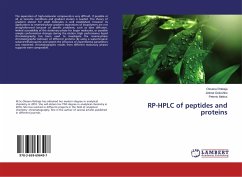Protein folding is one of the most fundamental
problems of the 21st century. Studies of protein
folding provide a better understanding of molecular
processes underlying disease which in turn helps in
better drug design. These studies are complicated by
the fact that the system presents innumerable
degrees of freedom. The interaction of the peptide
geometry determines the conformation of the peptide.
The thermodynamic factors that drive high entropy
(unfolded state) or low entropy (native state) of
the system have to be understood in order to better
understand the folding process. This work describes
some of these factors and how they affect the
folding process.
This work presents both classical and quantum
theories that explain the behavior of a molecule
when perturbed by an electromagnetic radiation. It
goes a head to show data from experiments
demonstrating the feasibility of UV resonance Raman
spectroscopy for the study of proteins.
problems of the 21st century. Studies of protein
folding provide a better understanding of molecular
processes underlying disease which in turn helps in
better drug design. These studies are complicated by
the fact that the system presents innumerable
degrees of freedom. The interaction of the peptide
geometry determines the conformation of the peptide.
The thermodynamic factors that drive high entropy
(unfolded state) or low entropy (native state) of
the system have to be understood in order to better
understand the folding process. This work describes
some of these factors and how they affect the
folding process.
This work presents both classical and quantum
theories that explain the behavior of a molecule
when perturbed by an electromagnetic radiation. It
goes a head to show data from experiments
demonstrating the feasibility of UV resonance Raman
spectroscopy for the study of proteins.








